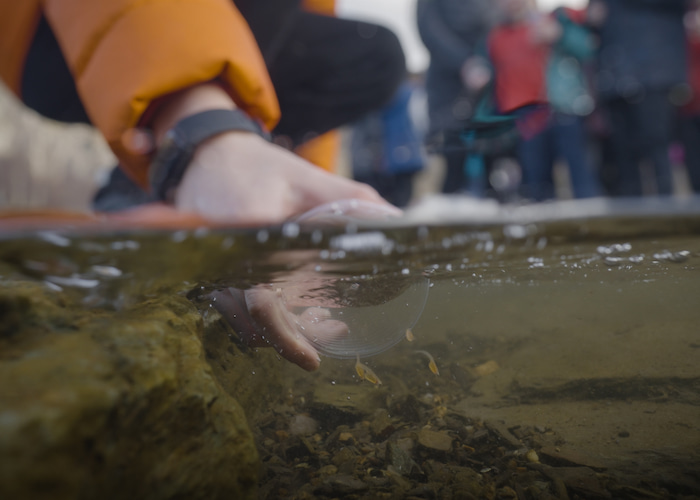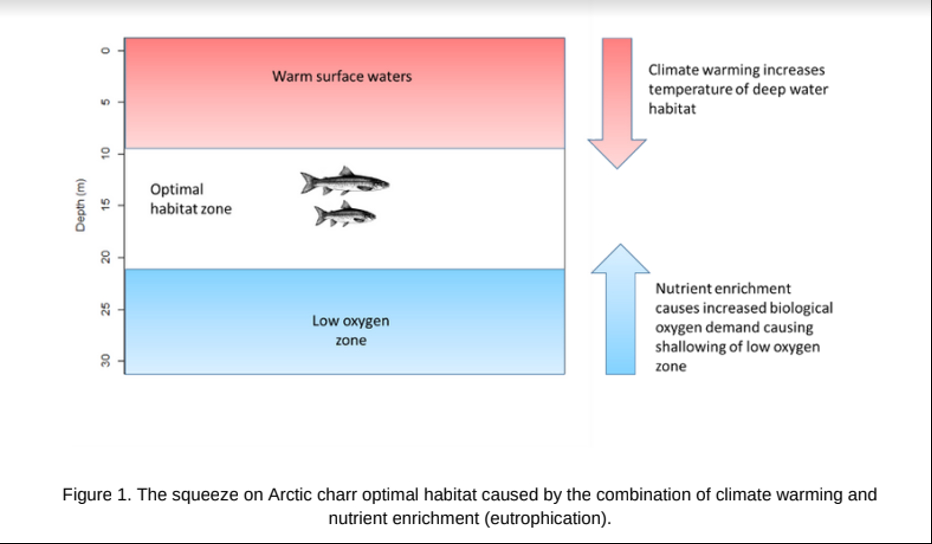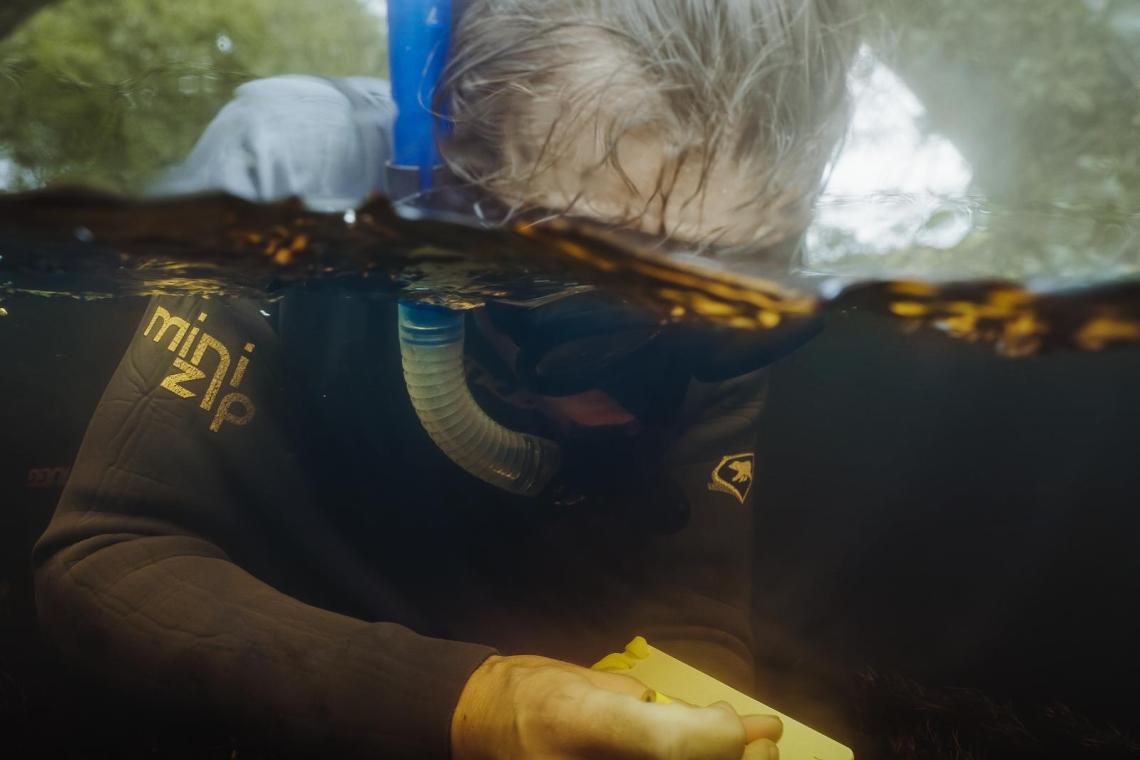Arctic Charr populations are under threat. A large rescue effort is being made to save them in North Wales.
Wales; a land where myth and reality intertwine, where tales are passed down through generations, speaking of creatures both mythical and real. Among these narratives lies the story of the Eryri Torgoch.
Journey to the foothills of Eryri National Park, where three lakes; Llyn Padarn, Llyn Cwellyn and Llyn Bodlyn are home to a declining population of Arctic charr, known locally as the 'red belly,' or ‘Torgoch’ an emblematic species of the region.
Teetering on the brink of extinction, the Arctic charr populations in Welsh lakes have prompted urgent conservation action. Spearheaded by the North Wales Rivers Trust, "Prosiect Torgoch" funded by National Heritage Lottery Fund, aims to help safeguard these iconic species through habitat restoration, research and community awareness.

The Remarkable Survival of Arctic charr in Britain
The Arctic charr, is a remarkable survivor from the ice age in Britain. Trapped in various lakes and Scottish lochs for millennia, these remarkable fish have undergone unique adaptations to thrive in their isolated habitats. These fish showcase remarkable diversity, reflecting their long history of evolution in local conditions after being cut off from the oceans when the ice retreated.
Unlike most other fish native to the British Isles, Arctic charr are adept at exploiting the depths of nutrient-depleted upland lakes. Their unique ecological role, reflected in their designation as a biodiversity priority species for the UK, marking their significance in preserving the delicate balance of these ancient ecosystems.

Declining populations
Arctic Charr populations are under threat in the UK. Monitoring of the charr population at Llyn Padarn by Natural Resources Wales suggests the population was in steep decline when surveys started in the late 1990s which continued up until 2014.
Numbers have since increased but are driven by a conservation breeding programme started in 2012. The high numbers of captive reared fish relative to wild is very large (~70% of adult fish are of stocked origin), indicating that low breeding success is a major concern at Llyn Padarn.
Until recent years most of the research and conservation efforts have focused on Llyn Padarn. Hydroacoustic surveys between 2014 and 2016 show the population at Llyn Cwellyn is more stable and larger than at Llyn Padarn. This is also supported by Environmental DNA surveys completed in 2019. These findings suggest Llyn Cwellyn may offer the best hope for the long-term survival of Arctic charr in Wales. However, the understanding of population trends at the lake remains limited and several pressures on the habitat have been identified.

Why is this happening?
The decline in Arctic charr populations is not just a statistical trend but a concerning reflection of broader ecological challenges facing Welsh lakes and rivers. Project Torgoch lead, Dr Antony Smith conducted a temporal analysis of data between 2007 and 2019 which showed a significant decline in deep water oxygen at Llyn Cwellyn caused by an increase in nutrients entering the lake.. Nutrient enrichment, known as eutrophication, has been a longstanding issue at Llyn Padarn dating back to the 1950s, and the analysis showed oxygen levels remain critically low.
Eutrophication is a particular concern for Arctic charr as it threatens the deepwater habitat upon which they depend. Fuelled by the increase in nutrients, the amount of algae in the lake grows and when these algae die, they remove oxygen from the lake. This reduction in oxygen happens most severely in deepwater, and it is in these cooler waters where Arctic charr seek refuge from warm summer temperatures. Therefore, in combination, eutrophication and climate change will reduce the volume of suitable habitat. Agricultural runoff, sewage discharge, and urban development are the primary causes of eutrophication.

In addition to eutrophication, loss and degradation of spawning habitat is a major concern at Llyn Padarn. As the slate industry developed, the shallow edges of the lake where charr would likely have spawned were modified and now do not offer suitable habitat. Later, construction of the Dinorwig power station prevented charr from accessing their historic spawning area in Llyn Peris. Charr have taken to spawning in the Afon y Bala downstream of Peris but high flows during flooding and power station discharges are understood to dislodge eggs from the spawning gravels.
As part of Prosiect Torgoch North Wales Rivers Trust aims to reduce nutrient inputs to Arctic charr lakes to prevent deoxygenation of the deep-water thermal refugia habitat upon which they depend. North Wales Rivers Trust are working with landowners, farmers, and organisations to educate and assist with riparian habitat restoration and better land management which will result in less agricultural run-off and poorly treated municipal waste entering the lakes.
The North Wales Rivers Trust will be continuing to research water quality at Llyn Cwellyn throughout the duration of the project. A palaeoecological study will describe nutrient trends over that last century and water quality monitoring in the upstream catchment will identify nutrient sources and locations for catchment restoration. At Llyn Padarn they are developing projects to restore spawning habitat which will be delivered as the project progresses.

Connecting with the local community
Working with local people to make them aware of the importance and significance of Arctic Charr in Wales is key to the ongoing success of saving the species. The North Wales Rivers Trust have energised a group of dedicated local volunteers who will be taking part in citizen science; conducting surveys, water quality monitoring and guided educational walks.
Addressing these issues is crucial for the long-term sustainability of Welsh lakes and rivers. By protecting Arctic charr populations, we can safeguard the integrity of wider ecosystems and ensure the continued provision of ecosystem services such as clean water, fisheries, and recreational opportunities for local people. Conservation efforts aimed at restoring habitat, reducing nutrient inputs, and mitigating the impacts of climate change are essential steps toward securing a future where Arctic charr thrive alongside other aquatic species in their natural habitats.
Smith, A., 2022. The population dynamics and conservation of Arctic charr, Salvelinus alpinus; lessons from Llyn Padarn, North Wales. Bangor University (United Kingdom).
Seymour, M. and Smith, A., 2023. Arctic char occurrence and abundance using environmental DNA. Freshwater Biology, 68(5), pp.781-789.


